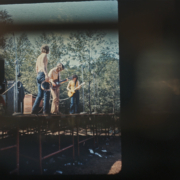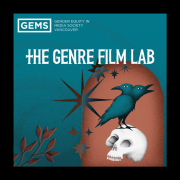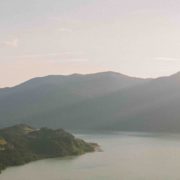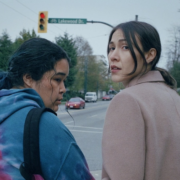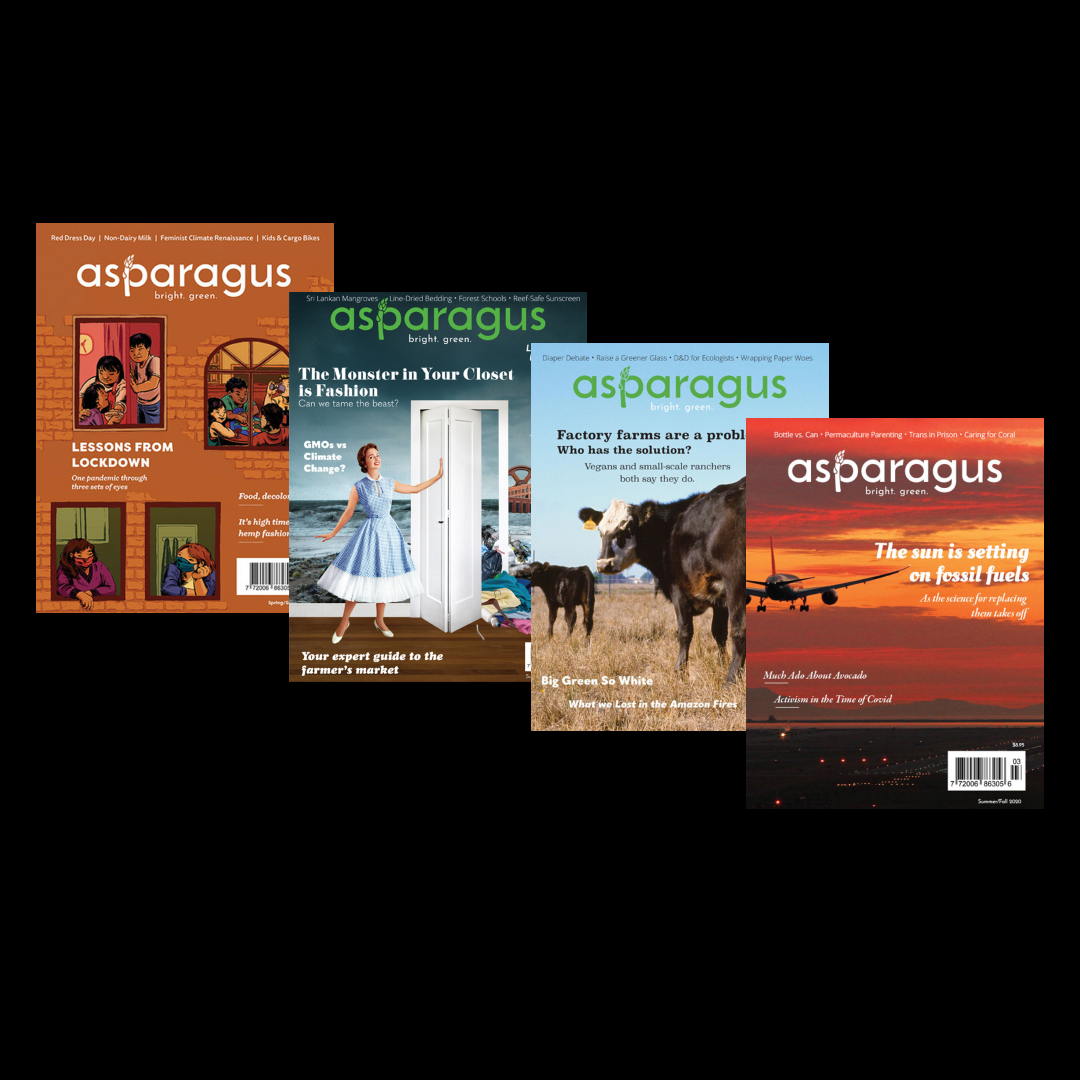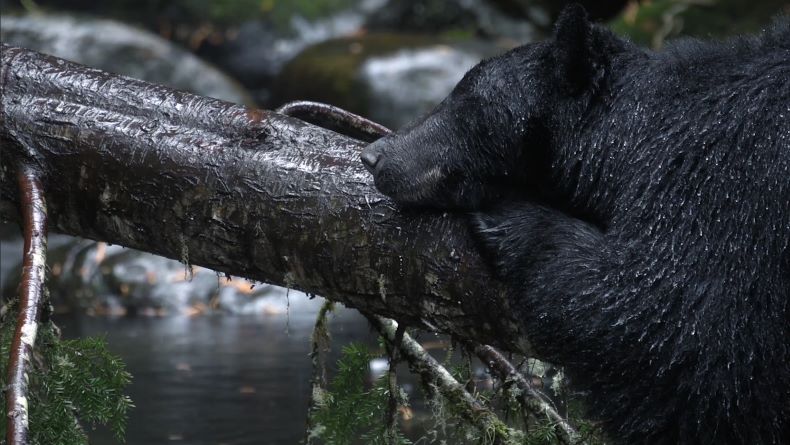
Photo credit: Jérémy Mathieu
On Canada’s West Coast, it can be challenging for animals to find a dry place to hibernate. For one of the forest’s most iconic inhabitants, the black bear, the answer lies within the forest’s largest and oldest trees. But how do you find and research where coastal black bears den if you can’t see them, much less make them the main subject of a documentary? A Bear’s Necessities produced by Wild Bus Films, explores the first question with biologist Helen Davis as she works to identify bear den sites as well as protect them. By using infrared camera technology, Helen gains a window into an unseen world and learns where and how bears den.
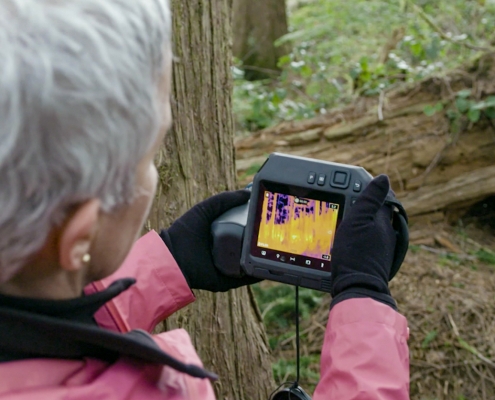
Wildlife Biologist Helen Davis uses an infrared camera to detect bear dens. Photo credit: Wild Bus Films
Based in the Pacific Northwest, Wild Bus Films is an award-winning production company that produces global science and natural history documentaries. Their 2022 original documentary created in partnership with Hakai Magazine features Helen Davis as she attempted to create bear pods to replace the dwindling tree hollows and cavities in old growth forests. The infrared cameras tested in the documentary are a new tool in bear den research, which could make it easier to identify bear den sites. A Bear’s Necessities gives viewers a glimpse into not only the lives of coastal bears, but also the research being done to protect them and their homes.
Jemma Titheridge, Director and Producer of A Bear’s Necessities explains what went into the filmmaking process:
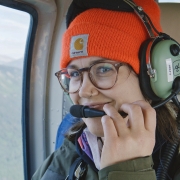
Director, Jemma Titheridge
How did you safely get footage of wildlife?
We wouldn’t have been filming bear dens without Helen’s guidance. Nick Quenville, our camera operator, had experience with filming bears at a rescue center, so he’s been up close to bears before. I had bear awareness training prior to filming and have encountered them on hikes before. Helen said before filming that the liability when encountering bears is the people you’re with, not the bears themselves. We needed to be quiet and parked far away from the dens, to not interrupt their hibernation.
How long did it take to get footage?
There are many different parts to the footage. There are the scenes we shot with Helen that took three or four days. Camera Operator Jeremy Mathieu, who captured the bear footage, spends many hours in the forest, finding the best locations, knowing not only where you can find bears, but where they’ll be okay around people and let you film them. We were lucky to work with him on this documentary.
I would love to know more about the infrared.
It’s at an exciting point right now where Helen and other researchers are still trying to figure out the feasibility of using infrared cameras to determine if a bear is sleeping in a tree hollow. The infrared camera we ordered was from Ontario and it wasn’t coming in time for our shooting days which meant we had to reschedule everything. Luckily, it all worked out fine, but it was incredibly stressful in the moment. The cameras don’t work well if it’s raining heavily, which happens on Vancouver Island frequently, but we lucked out and managed to get some good footage. There are still so many logistical things to work out with the cameras, but for the logging companies that voluntarily elect not to cut down bear dens, these cameras could potentially help people going out to check if there are any dens before cutting down trees.
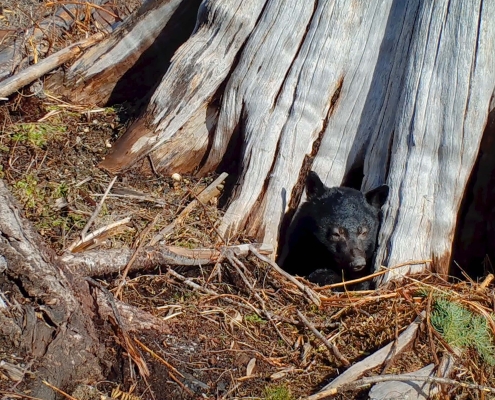
Camera traps monitor a bear in a stump den. Photo credit: Helen Davis
What was one of the main motivations for making this documentary?
I think probably the main motivation for Helen wanting to make the documentary is because she has been campaigning for bear dens to be protected for years. Her master’s thesis was based around coastal black bear dens in tree cavities and fallen structures. I don’t think it came out in the film but in the interview, she said she was just sure that the dens would be protected and that didn’t happen, and it still hasn’t happened. In making the documentary, she hoped to help to eventually get these dens protected. That was a strong motivation for her and an exciting potential for me because in communicating these issues, you do have an opportunity to influence legislation or people’s mindset. Whether or not the documentary will impact legislation or change people’s mindset, I don’t know, but it helps to inform the public that bear dens are in trees. So yeah, I think it has a good scope that way and, in another sense, too, obviously as you learn in the documentary, bears need large trees to den, and I think that really connects with the issues around old growth logging, which is super prominent in the province now too. A piece of that conversation also felt important because it’s a hot issue now. The research I did for this documentary reaffirmed how incredible and special the old growth forests we have on the coast are, and I think communicating why they’re important, that these trees are homes for bears is a special thing to be able to do.

Deforestation of Vancouver Island. Photo credit: TJ Watt
Any advice for aspiring documentarians?
Filming a documentary requires a huge investment of time, energy, and resources, and you’ll need to work with people who know areas incredibly well, whether it be scientists or locals. Taking the time to form relationships with people was the most important thing while working on this project and that focus differs from my previous work. My background was in the TV industry in the UK, specifically London, where the model is that you fly into a place and make a story and then you leave. That’s great and it works for many documentaries, but when you are local, you get the time to build relationships. In that way, you have a finger on the pulse of what’s an exciting new story or research or a cool new behaviour that you hear about from word of mouth.
Even though it is yet to be determined if infrared cameras can effectively help protect bear dens, there is one certainty: the relationship between bears and the BC coast is one that traces back ca. 13,400 to 11,000 years.

